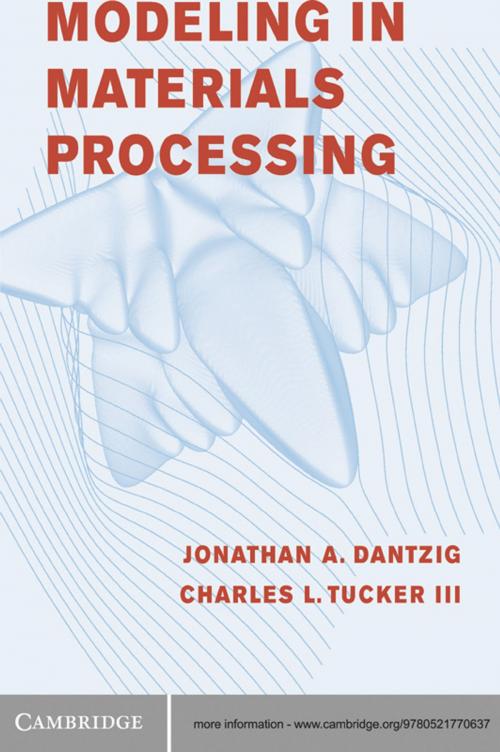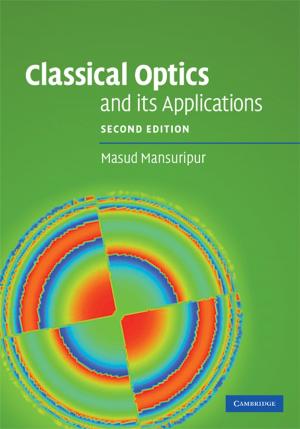Modeling in Materials Processing
Nonfiction, Science & Nature, Science, Physics, Mechanics, Technology, Reference & Language, Education & Teaching| Author: | Jonathan A. Dantzig, Charles L. Tucker III | ISBN: | 9781139636742 |
| Publisher: | Cambridge University Press | Publication: | November 12, 2001 |
| Imprint: | Cambridge University Press | Language: | English |
| Author: | Jonathan A. Dantzig, Charles L. Tucker III |
| ISBN: | 9781139636742 |
| Publisher: | Cambridge University Press |
| Publication: | November 12, 2001 |
| Imprint: | Cambridge University Press |
| Language: | English |
Mathematical modeling and computer simulation are useful tools for improving materials processing. While courses in materials processing have covered modeling, they have traditionally been devoted to one particular class of materials, that is, polymers, metals, or ceramics. This text offers a different approach, presenting an integrated treatment of metallic and non-metallic materials. The authors show that a common base of knowledge - specifically, the fundamentals of heat transfer and fluid mechanics - provides a unifying theme for these seemingly disparate areas. Emphasis is placed on understanding basic physical phenomena and knowing how to include them in a model. The book also treats selected numerical methods, showing the relationship between the physical system, analytical solution, and the numerical scheme. A wealth of practical, realistic examples are provided, as well as homework exercises. Students, and practising engineers who must deal with a wide variety of materials and processing problems, will benefit from the unified treatment presented in this book.
Mathematical modeling and computer simulation are useful tools for improving materials processing. While courses in materials processing have covered modeling, they have traditionally been devoted to one particular class of materials, that is, polymers, metals, or ceramics. This text offers a different approach, presenting an integrated treatment of metallic and non-metallic materials. The authors show that a common base of knowledge - specifically, the fundamentals of heat transfer and fluid mechanics - provides a unifying theme for these seemingly disparate areas. Emphasis is placed on understanding basic physical phenomena and knowing how to include them in a model. The book also treats selected numerical methods, showing the relationship between the physical system, analytical solution, and the numerical scheme. A wealth of practical, realistic examples are provided, as well as homework exercises. Students, and practising engineers who must deal with a wide variety of materials and processing problems, will benefit from the unified treatment presented in this book.















